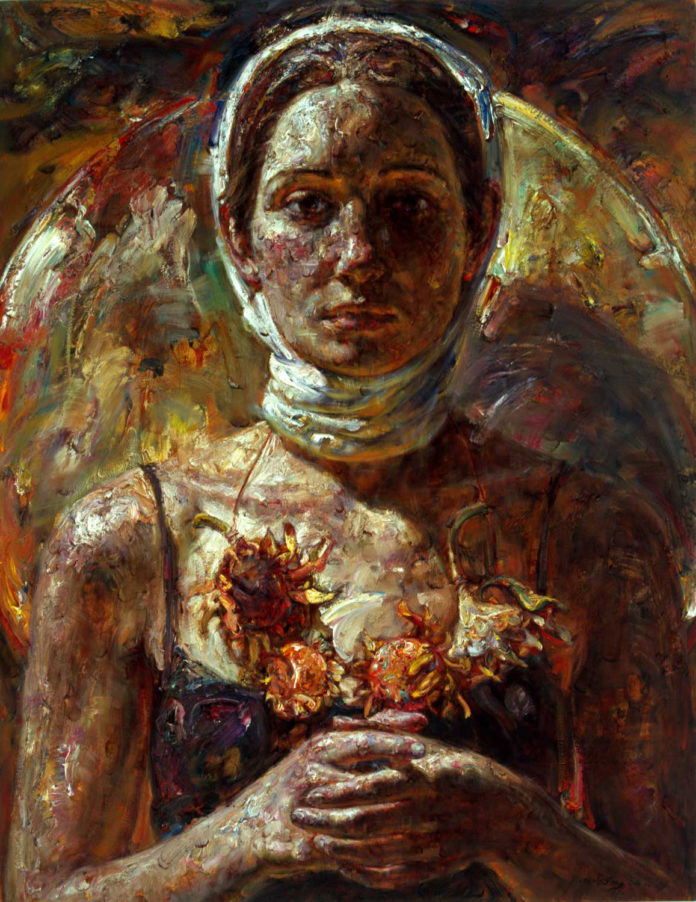See how Victor Wang creates a mixed media portrait that’s layered with texture and meaning.
Step-by-Step Mixed Media Portrait Painting
BY VICTOR WANG
Step 1
First, I apply acrylic matte gel medium glued onto the digital images of Tang Dynasty paintings printed on acid free paper. I then add line drawings with permanent marker over it and seal the surface with acrylic matte gel medium.
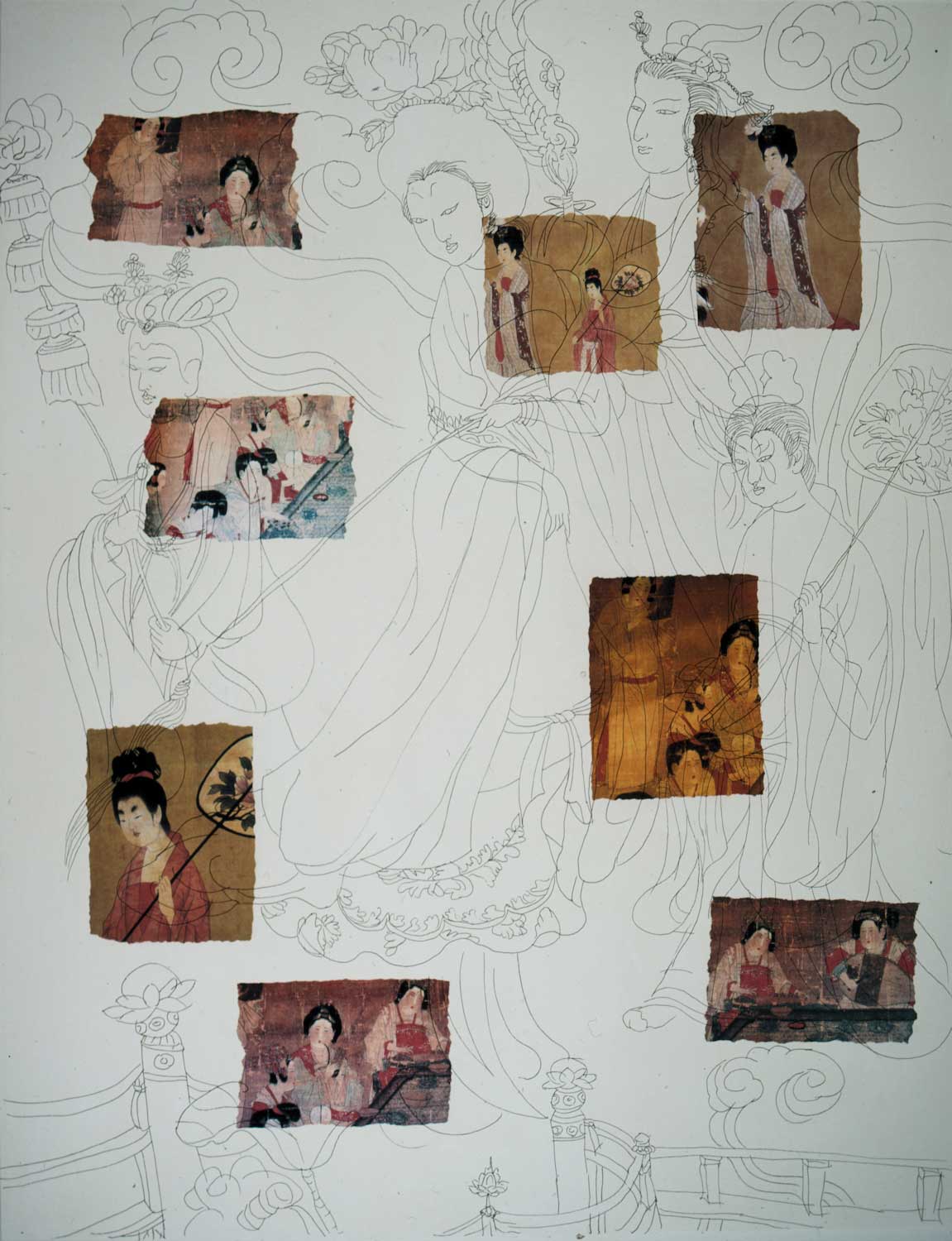
Step 2
I then tone the canvas with transparent burnt sienna oil paint. On top of this, I sketch charcoal line drawings, keeping the under-collage still visible.
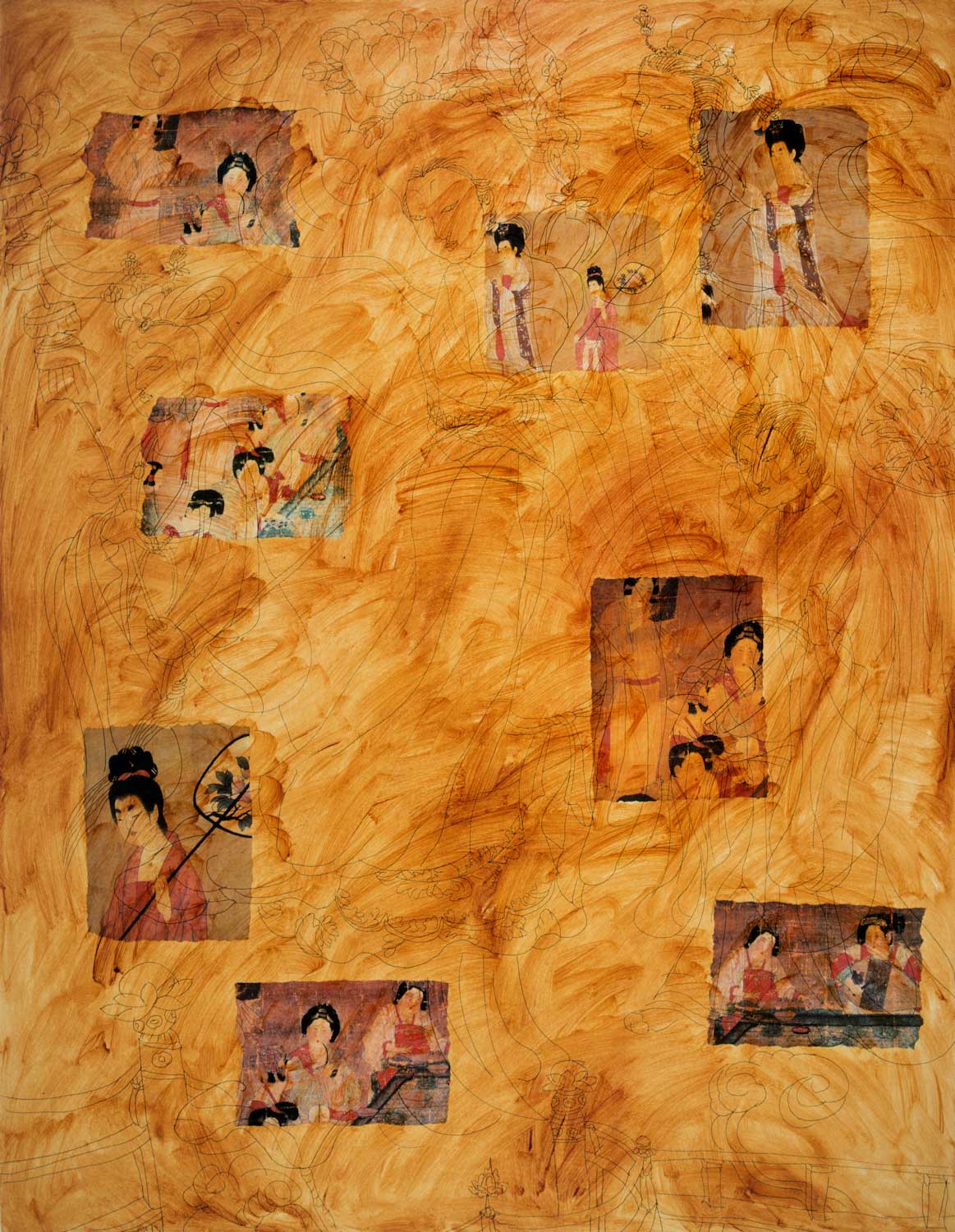
Step 3
At this point, I have built up shadowy areas with dark brown colors to give a sense of dark tone in the composition.
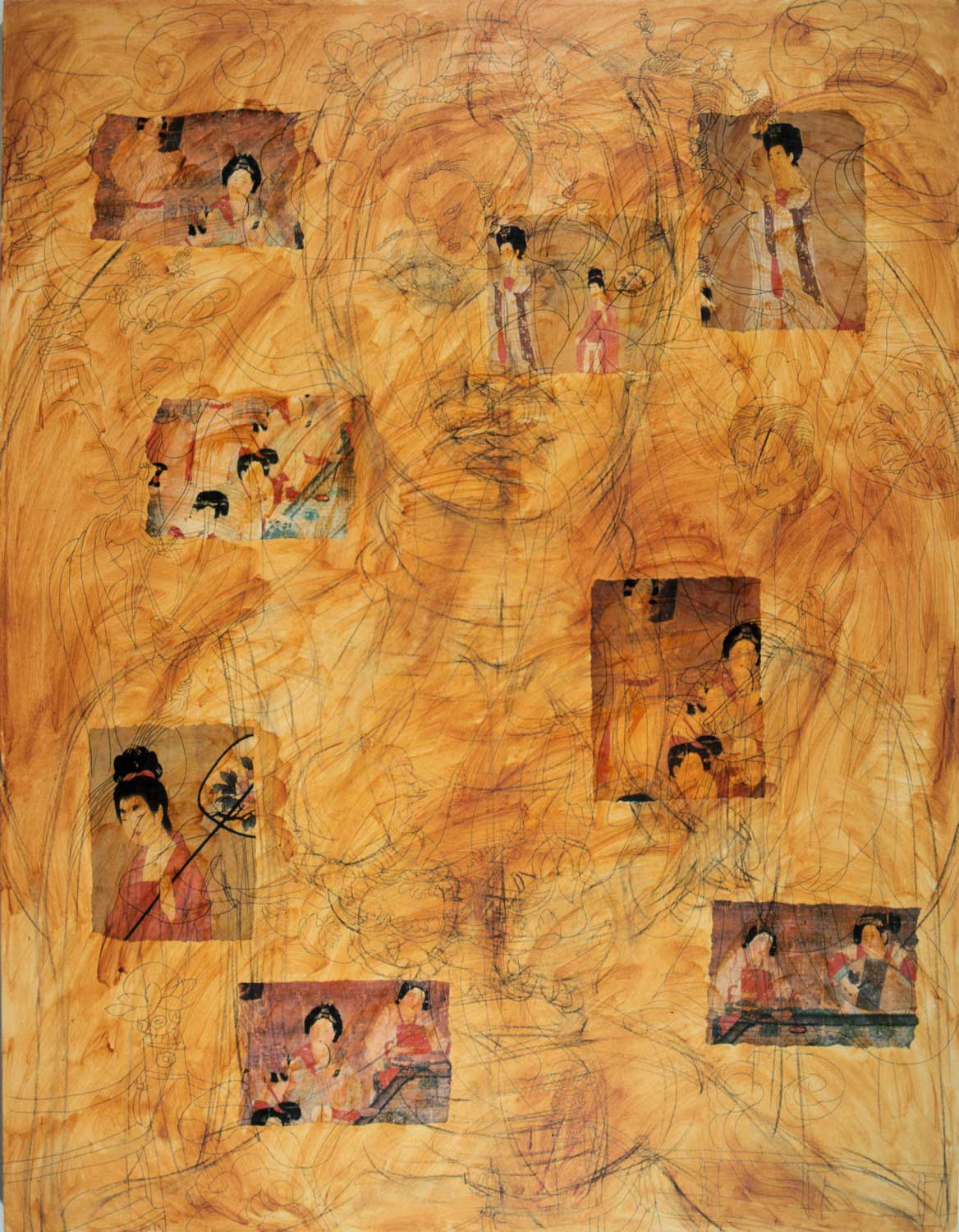
Step 4
In this step, I add chunky flake white paint to all highlighted areas. Meanwhile, I give more definition to shadow shapes with dark flesh colors and work more richly toned dark shades into the background. At this stage, the under-collage is still visible.
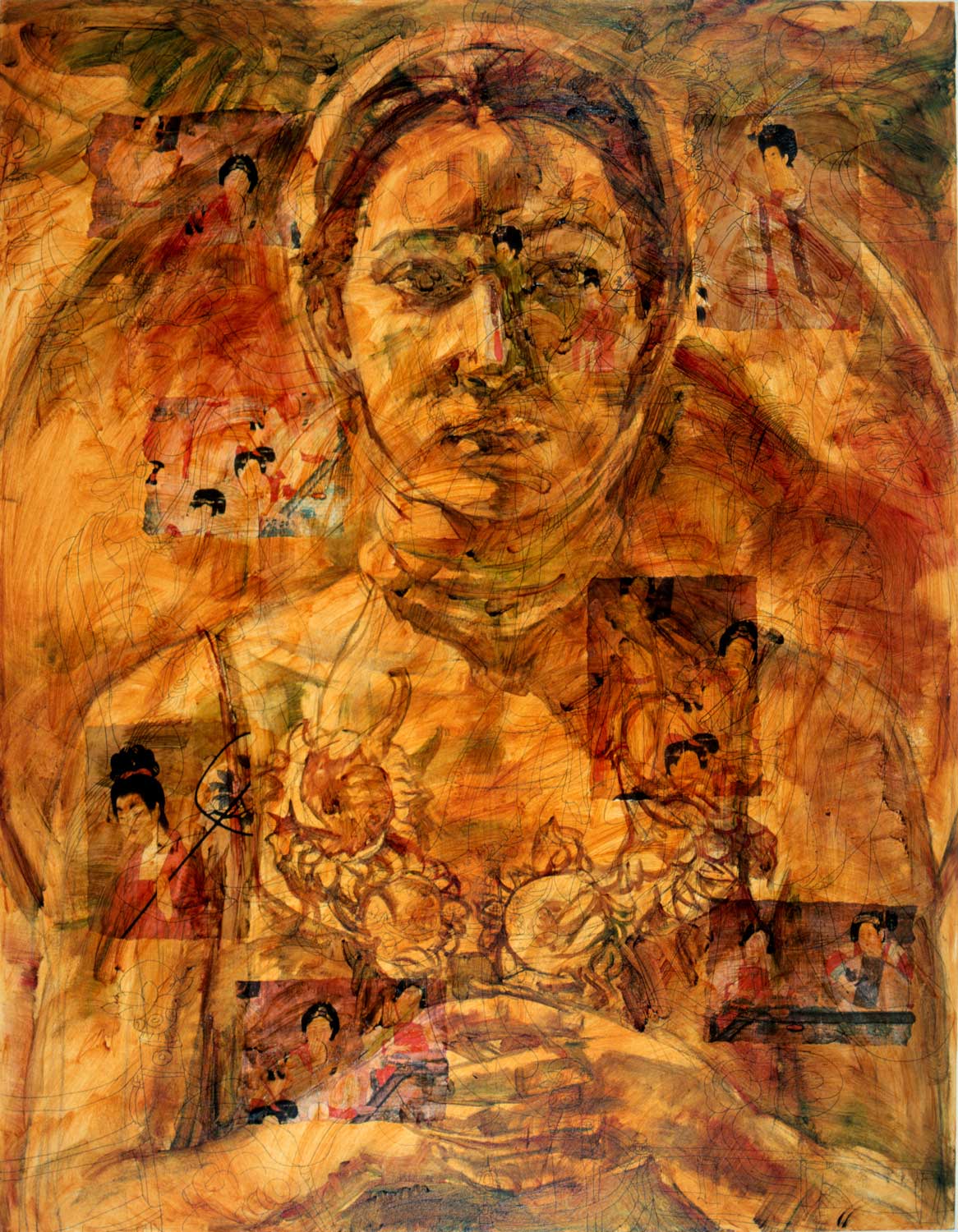
Step 5
Next I start to add different shades to highlights and shadows while layering more paint in the face, skin, and fabric areas. I enrich the background with bold shots of color and streaks of darkness.
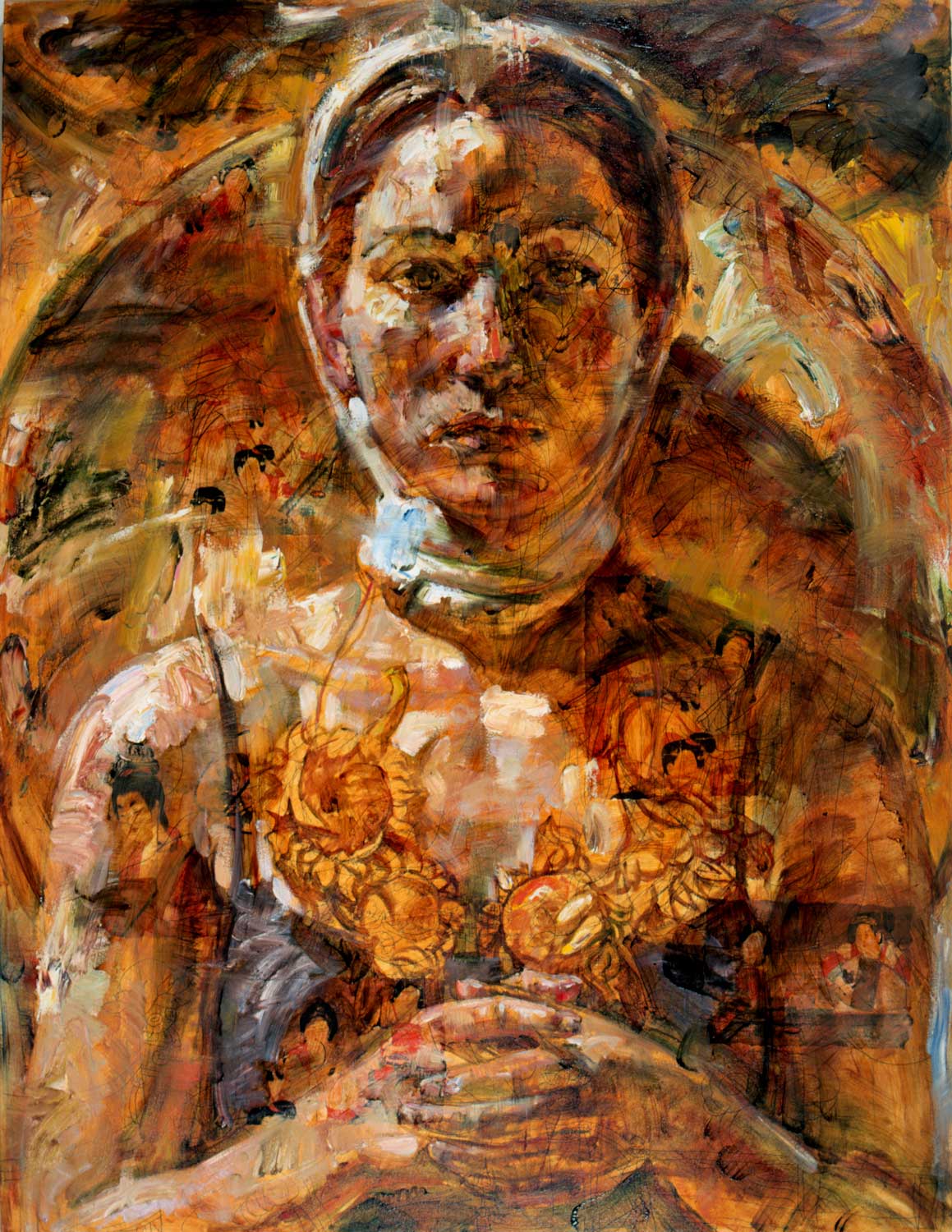
Step 6
Despite my thick application of paint, I tweak any nuances and add subtle highlights and shadows. I add further layers across the canvas in different styles. The face receives many short strokes and I predominantly mix my wet-in-wet directly onto the canvas. At this point, I have filled in the sunflowers with color and texture and concealed nearly all evidence of the under-collage. Yet, the viewer can still see hidden figures here and there.
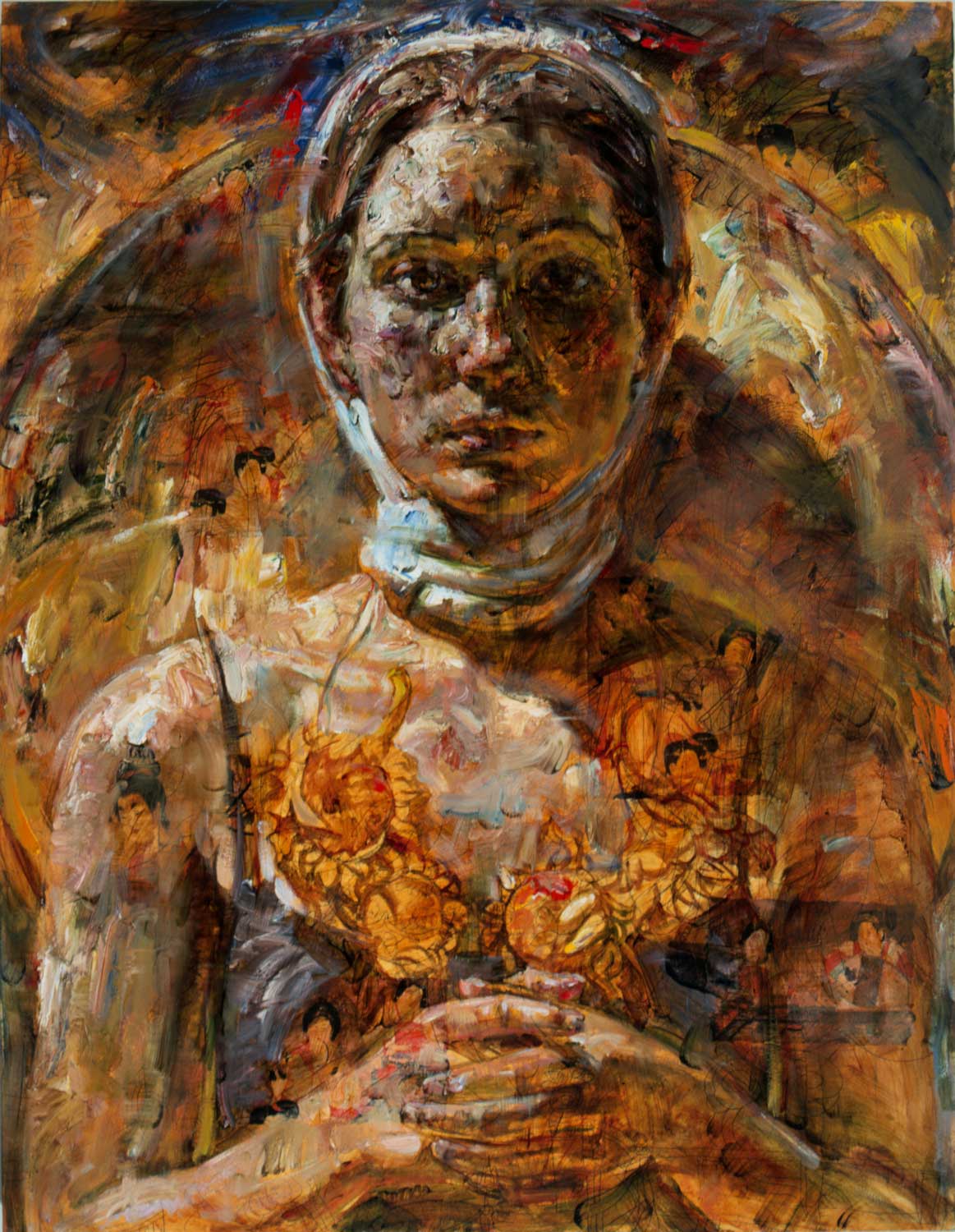
Step 7
More paint is added to all areas to lighten and warm the skin tones and background, and I work on the subtleties and transitions. I then glaze one more layer of transparent color on shadowy areas. All areas receive thick layers of paint, especially lighted areas, which I prefer to be thicker and heavier than the shadowed areas to imitate the effects of shallow relief.
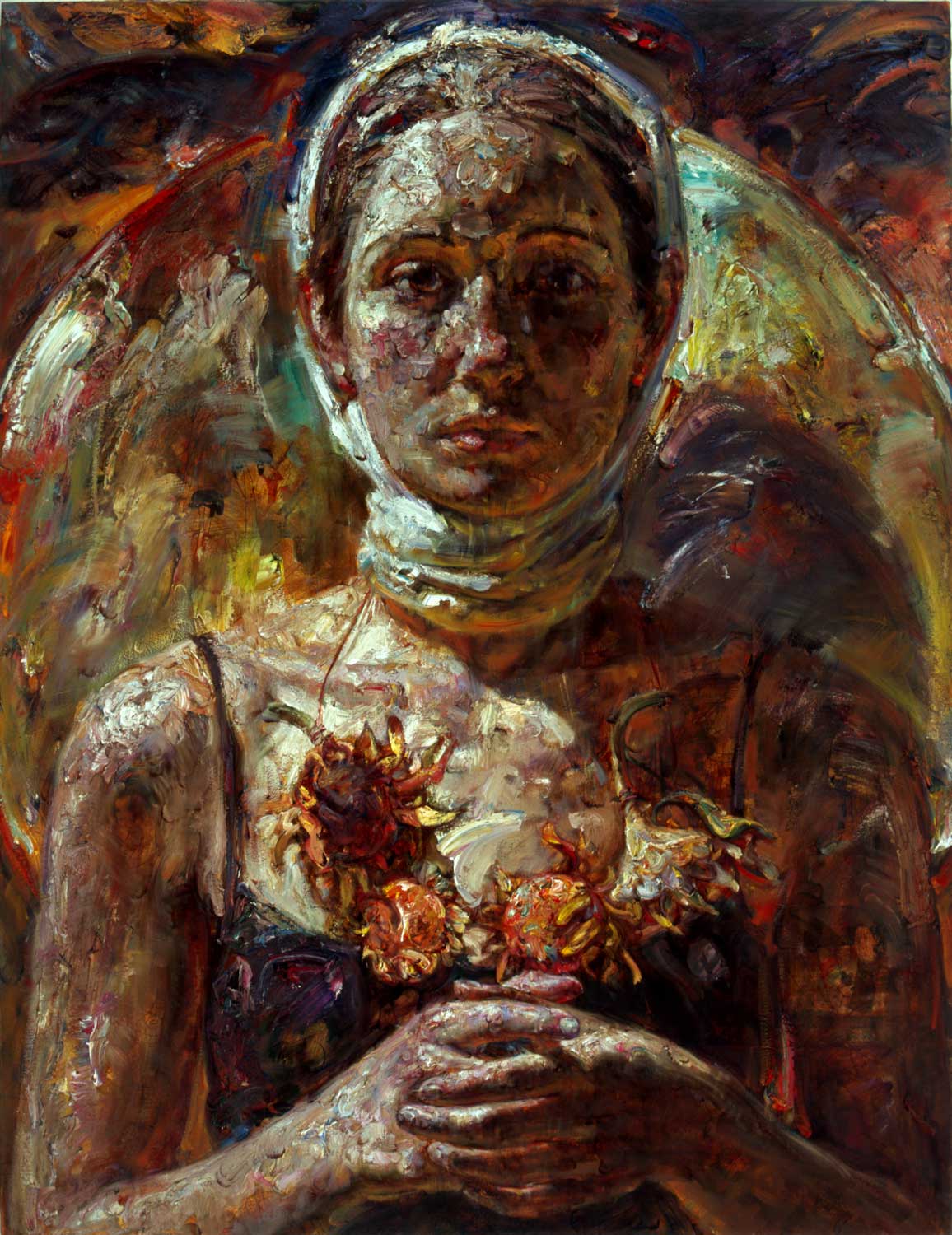
Step 8
For the final layer, I smooth out some of the bolder chunks of color to unify the piece and make each section more harmonious with the rest, including sections of the face and background.
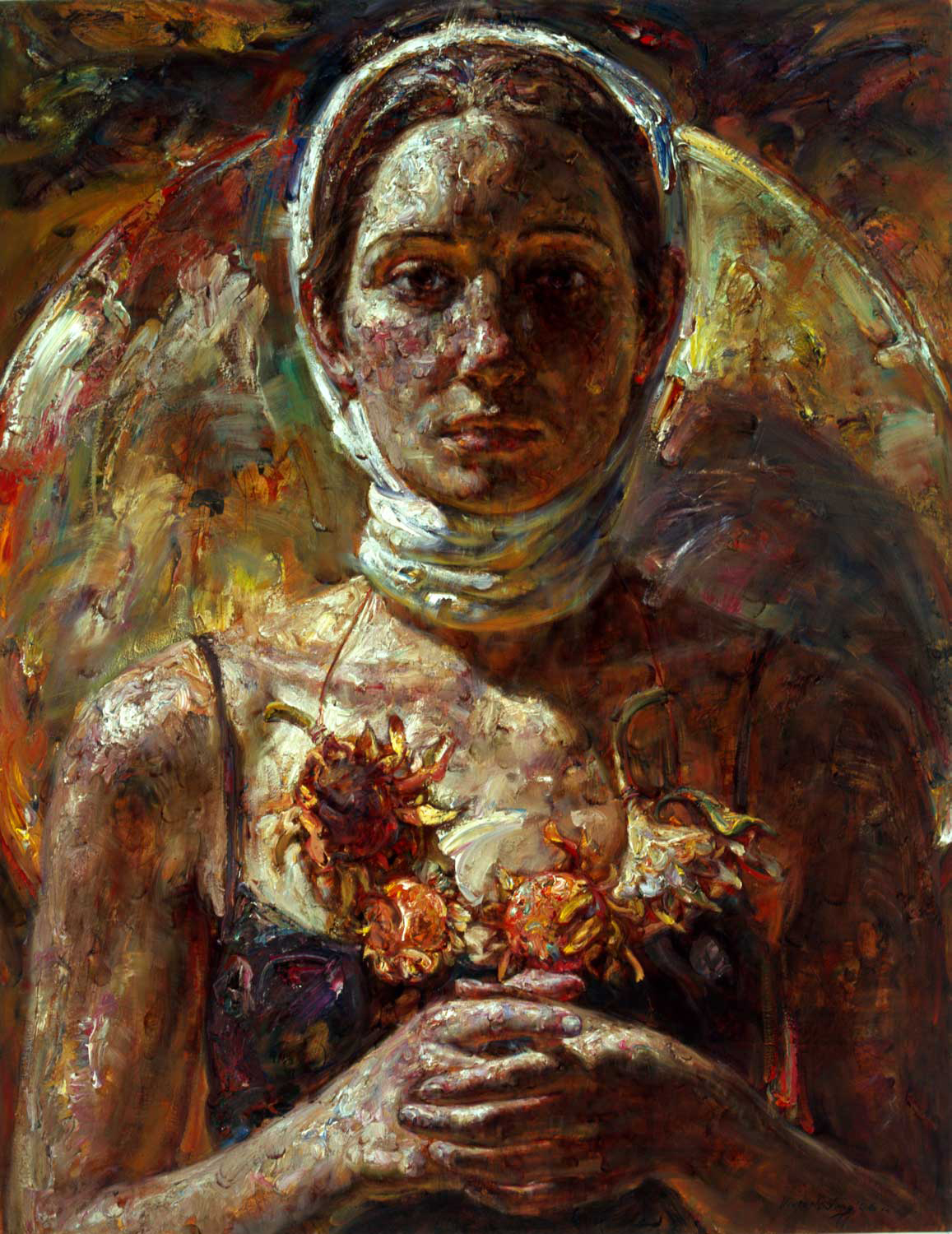
ABOUT THE AUTHOR
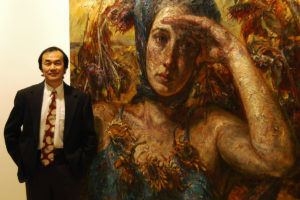
Victor Wang grew up in northern China and graduated with a BFA from the Lu Xun Academy of Fine Arts, one of three top art institutes in China. After graduation he taught there for more than four years, after which he was sent to the University of Illinois at Urbana-Champaign as a visiting scholar. He earned his MFA in Fontbonne University.
Wang currently lives in St. Louis, where he teaches painting, drawing, and graduate critique classes as a full professor at Fontbonne University. He has exhibited widely across the country and internationally, and has won various awards for excellence, including awards for both painting and art instruction. His work has been shown nationally and internationally.
Connect with the artist:
Website | Instagram
Related Article:
This article is sponsored by:
Art Video Workshop:
Jean Pederson’s “Mixed Media Portraits: Beyond Realism”
If your portraits can’t be described as exciting, unique, and authentic, but you would like them to be, this is for you! You’ll no longer be painting exactly what and who you see … you’ll be conveying the inner soul of your subject … who they are outside of just their physicality.
You’ll hear Jean Pederson ask, “How much information do you have to give your audience to communicate the idea of a portrait?” With that question as a foundation, she’ll show you what you need to include and what’s best to leave up to your viewer’s imagination. This concept alone will help you to stop focusing on the tiny details that can be frustrating in portrait painting. You’ll now be enjoying the freedom that comes with creating your own interpretation of the person you’re painting.


